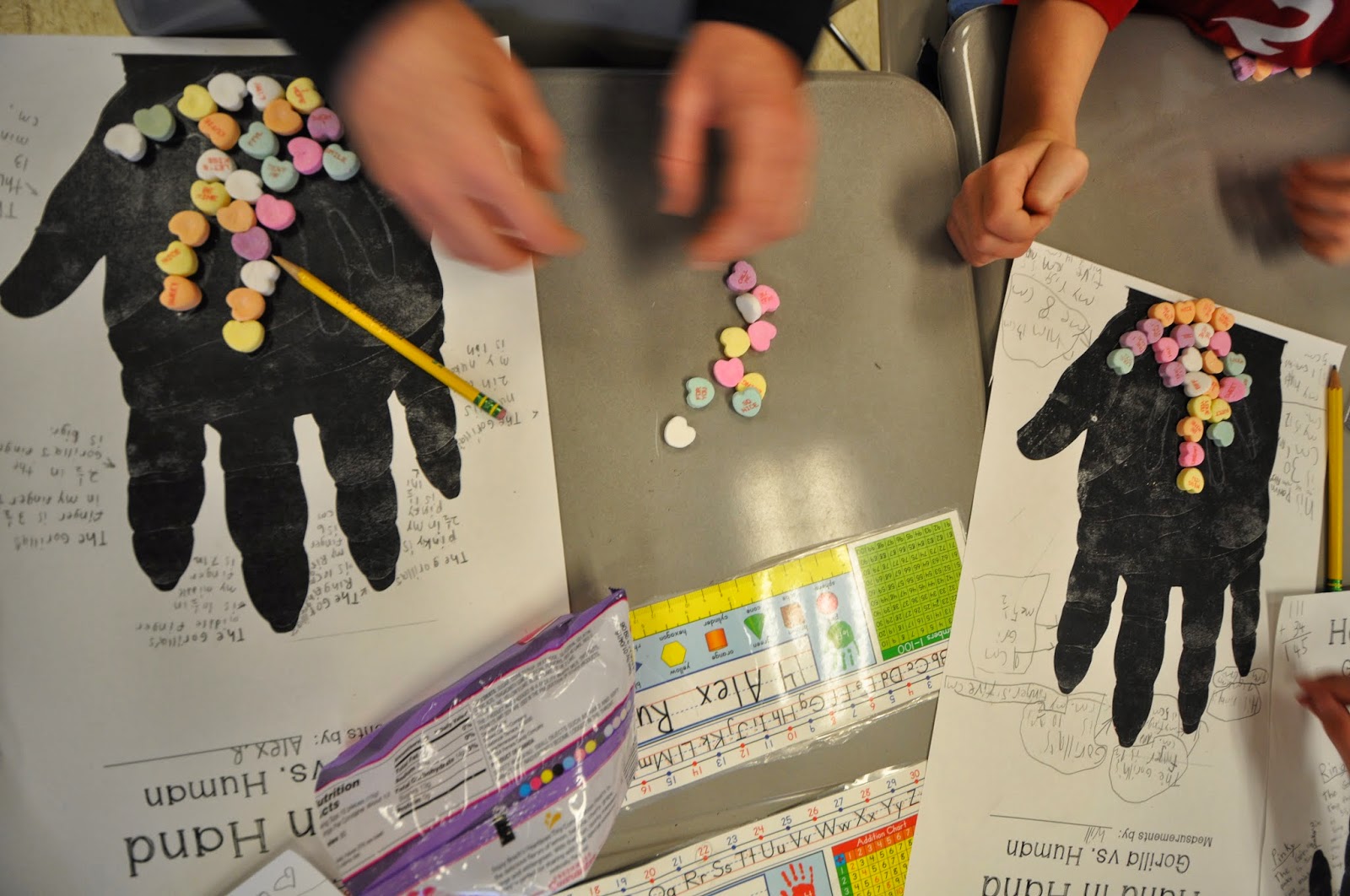I copied the gorilla hand from the book onto 11x17 paper. I wanted to keep it 'actual size' though reducing it to an 8 1/2 x 11 sheet would have been much easier. :) In second grade a standard is to compare different measurements.2. MD.A.4 Measure to determine how much longer one object is than another, expressing the length difference in terms of a standard length unit.
I had students draw their hand inside of the gorillas and begin measuring it from different lengths to compare measurement. They used both inches and centimeters and then found the difference between their hand and the gorillas. i.e "The gorilla's middle finder to the bottom of his palm is 12 inches and mine is 7 inches. The difference is 5 inches." "The gorillas thumb is 5 1/2 in. and my thumb is 4.5 inches. The gorilla's thumb is 1 in. bigger than my thumb"
We created a word bank on the board so they could be precise with what they were describing-- because if not... they would have just been giving me the finger a lot!!! For students that were quick I had them total the length of the gorillas fingers and find the difference with their total finger length. Same for knuckles. It was great for differentiation because students could go at their own pace and you could easily modify how and what they measure. For younger students they could easily do with with cubes, paper clips, etc.
After they were winding down on measurement I asked them if the ruler alone can describe the size difference in their hands. At first they didn't get it, so I had 2 students come up. I gave one a really thin piece of paper and another one a big piece--- both of the same length. I asked if that was the same length-- so they are the same? They caught on and said "NOOOOO they are different sizes" Insert lesson on area.
I rummaged under my desk, aka Mary Poppin's carpet bag, and found Valentines candy hearts that we didn't use. As a table they found out how many candy hearts fit into the gorilla hand, and then had them to the same individually. This also posed as an excellent springboard for arrays and multiplication. They found the difference in area (in candy hearts) between the gorillas hand and theirs.
"The area of the gorillas hand is_____ candy hearts. The area of my hand is ______ candy hearts. The difference in areas is _____ candy hearts."
After they got done they shared in groups and then on the carpet. The book has a TON of other animals to compare with and get different measurements from. You could use this book to count with standard/nonstandard units, multiplication, ratios, proportions, area, mass, volume, weight, comparing different animals in writing, habitats, adaptations, etc.






No comments:
Post a Comment